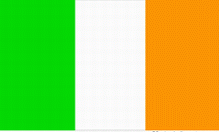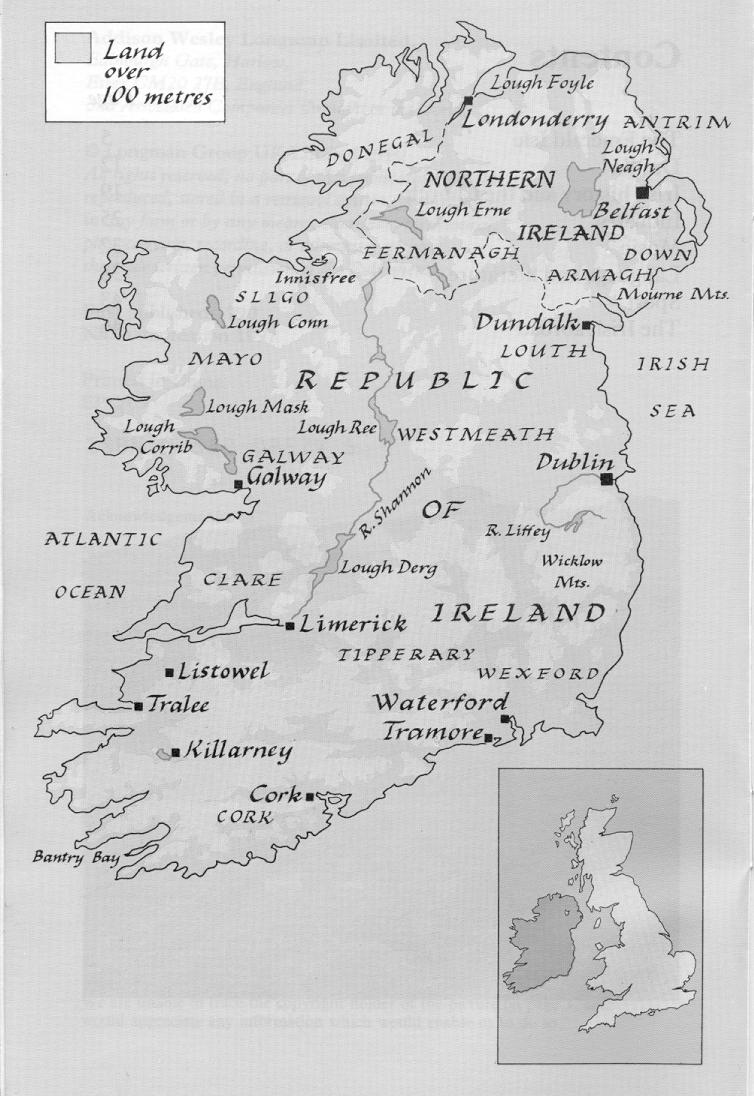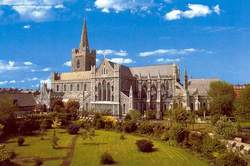
- •Министерство образования рф
- •Part I. The United Kingdom of Great Britain and Northern Ireland Unit1. Cultural aspects of geography
- •United Kingdom of Great Britain and Northern Ireland
- •National flag of the United Kingdom `Union Jack`
- •Physical Features, landscape.
- •England
- •Basic facts:
- •National flag of England
- •Dover Task 2. Read the description of counties and concentrate on cultural associations that geographical names have. While reading make a table:
- •Scotland
- •Basic facts:
- •National flag of Scotland
- •Edinburgh
- •Northern Ireland
- •Basic facts:
- •National flag of Northern Ireland
- •Basic facts:
- •National flag of Wales
- •Task 6. Check yourself questions:
- •Unit2. Population of the uk basic facts:
- •Migration
- •The English
- •The Welsh
- •The Scots
- •The Irish
- •The History and Structure of Immigration
- •Nationality Legislation
- •Culture
- •Asylum seekers bring many benefits
- •Britain opens door for skilled immigrants to fill hi-tech jobs
- •Race row hits Tories
- •Unit 3. Monarchy basic facts:
- •History
- •The Royal Coat of Arms and the Anthem
- •Kensington Palace
- •Task 3.Check yourself questions:
- •50 Facts about the queen's reign
- •50 Facts about the duke of edinburgh
- •Unit 4. Parliament
- •Basic facts:
- •Layout of the Palace of Westminster
- •The House of Lords
- •The House of Commons
- •Conduct of debates in the Commons
- •A typical day's business in the Commons Chamber.
- •Unit 5. Political Parties and Government basic facts:
- •Political Parties
- •The Party System in Parliament
- •Financial Assistance to Parties
- •Local Government
- •The iron lady
- •Tribute to john major
- •Theme 6. Law system
- •Types of Courts
- •High Court CoCourt basic facts:
- •Types of Schools
- •Entry requirement to British universities, colleges or jobs
- •Higher Education
- •Theme 8. Ways of Life in uk basic facts:
- •3. Parks in Great Britain
- •Ingredients:
- •Student d. Scotch Broth
- •Theme 9. Customs and traditions
- •Basic facts:
- •Christmas Traditions
- •Pearly Kings and Queens
- •Scotland’s symbols and traditions
- •The Night of Hogmanay
- •The New Year
- •Highland Games
- •Burns’ Night
- •Gretna Green Marriages
- •Welsh symbols and traditions
- •St David’s Day
- •Wishing Wells and Love Spoons
- •The Red Dragon of Wales
- •Eisteddfod
- •Noson Lawen
- •Cymanfa Ganu
- •Halloween
- •Symbols and traditions of northern ireland
- •The Red Hand of Ulster
- •Shamrock
- •White Ribbon
- •St Patrick’s Day
- •Easter Customs in Northern Ireland
- •Theme 10. Going out
- •Basic facts:
- •English Pubs
- •Pubs in Scotland
- •Irish pubs
- •Welsh pubs
- •January/February/March/April 2003
- •Part II. Republic of Ireland Unit 1. Land and People basic facts:
- •St Patrick’s Cathedral
- •Task 6. Check yourself questions:
- •Task 7. Match up the names of counties and their peculiarities.
- •Task 8. Choose a holiday in Ireland. Discuss the tours with a partner and choose one.
- •Theme 2. History of Ireland
- •Basic facts:
- •A Brief Outline of History
- •Theme 3. Political Life, Economic and Cultural Development of Ireland basic facts:
- •Contents
- •Theme 6. Law system. Skills developed: reading (interpreting facts, summarizing), classification.
- •References:
Part II. Republic of Ireland Unit 1. Land and People basic facts:

Task 1. Read the basic facts and compare Ireland to parts of the United Kingdom.
Ireland has a population of 3,744,700 (1999 estimate), with Dublin, its capital city, having a population of 953, 000.
The National Flag is a tricolour of green, white and orange.
The country enjoys a relatively mild climate with average monthly temperatures ranging from 7 degrees Celsius in January to 19 degrees in July. Ireland has an average monthly rainfall of between 2 and 3 inches with average daily hours of sunshine ranging from 2 hours in December to 6 hours in June.
The country’s total area is 84,412km squared with a total coastline distance of 3,172km.
Ireland’s highest mountain is Carrantouhill, Co. Kerry at 1,041m.
Ireland has two official languages, English and Gaelic.
The free profession of religion is guaranteed to all citizens by the Irish Constitution. The National Day of Ireland is St. Patrick’s Day, celebrated by Irish communities all over the world on the 17thof March.
Task 2. Study the map. Have you heard any geographical names before? Where is Dublin? Where is Shannon?
Task 3. Read the information about the counties of Ireland and make a crossword. Exchange your crosswords in class and solve them.
Task 4. Have you heard Ireland’s nickname ‘The Emerald Island’? Why is Ireland called so?
Task 5. While reading the information below concentrate on :
traditions associated with different counties;
peculiar branches of industry or agriculture characteristic of this or that county;
historical and cultural associacions with different counties.

The republic’s 26 counties are Monaghan, Cavan, Donegal ,Louth, Meath, Dublin, Kildare, Wicklow, Carlow, Wexford, Kilkenny, Laoighis, Offaly, Westmeath, Longford, Tipperary, Waterford, Cork, Kerry, Limerick, and Clare, Leitrim, Roscommon, Galway, Mayo, and Sligo.
Monaghan, Cavan and Donegal are part of the historic province of Ulster, the other six counties of Ulster are in Northern Ireland.
The county seat of Monaghan [me’nohen] is Monaghan. The northwest portion of the county is a part of the fertile central plain of Ireland; to the south and east are hilly sections. It is primarily an agricultural county. The main enterprise is the raising of beef and dairy cattle. Potatoes, oats, and turnips are the chief crops; pigs, sheep, and poultry, as well as cattle, are raised in large numbers. Other industries are bacon production and the manufacture of furniture and footwear.
The county seat of Cavan [‘kaven] is Cavan. The county is a hilly region of lakes and bogs, and the climate is extremely damp and cool. Most of the soil is clay. The Erne is the principal river, and the Shannon has its source there. Pastoral agriculture is the chief occupation, although very little land is under cultivation (in the form of small farms). Industries include plastics, wallpaper, creameries, and food processing. Cavan was organized as a shire of Ulster in 1584.
The county seat of Donegal [do’ni:gal] is Lifford. The extremely irregular coastline extends from Lough Foyle on the north to Donegal Bay on the west and is deeply indented by Lough Swilly. Lough {loh] means lake. Tory Island is the largest of the coastal islands. The west is rugged and hilly. There are two mountain ranges: the Derryveagh Mountains. in the northwest and the Blue Stack Mts. in the west central region. The chief rivers are the Foyle, the Erne, and the Finn; lakes are plentiful. Donegal has no rail service. Although agriculture is the leading industry, only one third of the land is suitable for cultivation. The valleys of the Finn and the Foyle are the most intensively cultivated areas. Oats and potatoes are the chief crops. Fishing and tourism are also important industries. In the south is the center of the Donegal cloth industry that produces tweeds and handmade woolens. There are several small skirt factories. Newer industries include carpet, fishing net, and synthetic fiber manufacturing.
Louth, Meath, Dublin, Kildare, Wicklow, Carlow, Wexford, Kilkenny, Laoighis, Offaly, Westmeath, and Longford comprise the historic province of Leinster.
The county seat of Louth [louth] is Dundalk [den’do:k]. The region borders the Irish Sea from the mouth of the Boyne River to Carlingford Lough. The landscape is plain, except for a hilly district in the north. Principal rivers are the Fane, the Glyde, and the Dee. Among the industries are cotton and linen manufacturing, brewing, and food processing. Dundalk, Drogheda, and Greenore are ports. The region is associated with the exploits of the legendary Irish hero Cuchulain.
T he
county seat ofMeath
is Navan.
The land is mostly level, being a part of the central plain of
Ireland, with extensive fertile areas near the Boyne and the
Blackwater, the principal rivers. There is a sandy coastline of some
10 mi (16 km) along the Irish Sea. Grain and potato cultivation and
cattle raising support the bulk of the population. Manufacturing
exists in the larger towns. The region is important in Irish
history. The Hill of Tara (507 ft/155 m high) was the seat of the
high kings of Ireland from ancient times until the 6th
century and may have been the site of religious ceremonies in
prehistoric times. A statue of St. Patrick, who preached there, is
supposed to mark the location of the Lia Fail, the Coronation Stone
of the ancient high kings. The hill was the scene of the defeat of
the Danes in 980 and of a mass meeting in 1843 addressed by Daniel
O’Connell; hence its importance as a symbol of Irish nationalism.
Meath was considered a fifth province of Ireland for many centuries
and was not finally organized as a county until the 17th
cent. Remains of archaeological interest have been found in the
Newgrange burial site. Newgrange is located in the Boyne Valley and
is 5000 years old. It is a listed world heritage site along with the
Great Wall in China, the Pyramids of Egypt and Stonehenge. Newgrange
is a Neolithic Ritual Centre and a place of burial.
he
county seat ofMeath
is Navan.
The land is mostly level, being a part of the central plain of
Ireland, with extensive fertile areas near the Boyne and the
Blackwater, the principal rivers. There is a sandy coastline of some
10 mi (16 km) along the Irish Sea. Grain and potato cultivation and
cattle raising support the bulk of the population. Manufacturing
exists in the larger towns. The region is important in Irish
history. The Hill of Tara (507 ft/155 m high) was the seat of the
high kings of Ireland from ancient times until the 6th
century and may have been the site of religious ceremonies in
prehistoric times. A statue of St. Patrick, who preached there, is
supposed to mark the location of the Lia Fail, the Coronation Stone
of the ancient high kings. The hill was the scene of the defeat of
the Danes in 980 and of a mass meeting in 1843 addressed by Daniel
O’Connell; hence its importance as a symbol of Irish nationalism.
Meath was considered a fifth province of Ireland for many centuries
and was not finally organized as a county until the 17th
cent. Remains of archaeological interest have been found in the
Newgrange burial site. Newgrange is located in the Boyne Valley and
is 5000 years old. It is a listed world heritage site along with the
Great Wall in China, the Pyramids of Egypt and Stonehenge. Newgrange
is a Neolithic Ritual Centre and a place of burial.
The county of Dublin is dominated by Dublin, which is the county seat and capital of the Republic. “Dublin” is derived from the Viking name “Dubh Linn”. The Vikings founded this town in 841 when a permanent Viking settlement was established there. Dublin is home to a great literary tradition. G.B. Shaw, W.B.Yeats, Samuel Beckett, Oscar Wilde are Dubliners. Oscar Wilde was born in Dublin and studied in Trinity College. Jonathan Swift was the Dean of St Patrick’s Cathedral in Dublin and is buried in the Cathedral. In 1991 the Dublin Writers Museum was opened. Swift and Sheridan, Shaw and Wilde, Yeats, Joyce and Beckett are among those presented through their books, letters, portraits and personal items. The museum holds exhibitions and readings and has a special room devoted to children’s literature. Dublin is also the cradle of many musical talents, from the Dubliners and the Chieftains to U2.
Dublin’s tourist attractions also include Malahide Castle, Shaw Birthplace, James Joyce Museum, the National Gallery of Ireland,Christ Church Cathedral, the National Museum of Ireland. Agricultural products, whiskey, and stout are the chief exports of Dublin city.
Dublin’s chief industries are brewing, textile manufacturing (silk making was introduced by Huguenot refugees in the 16th cent.), distilling, shipbuilding, food processing, and the


